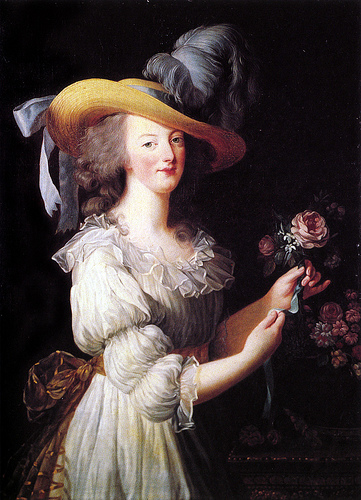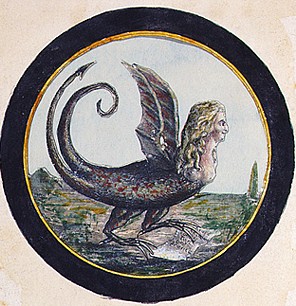"A (female) reader directed me to a site which uses a simple illustration technique to raise questions about "the cosmetics" of Sarah Palin. Now, click through and roll over the examples ... and come back and tell us what you're seeing."
I was surprised that so much of the response focused on if the post itself was sexist. This was my response:
In fact, the topic of image construction becomes particularly interesting when it intersects with political power. Examples like Hatshepsut (a female Pharaoh of Egypt who clothed herself in the male dress of the title), or Queen Elizabeth of England, (literally painted as the virgin married the nation), reveal how long women have been utilizing dress as political tool.


Hatshepsut Statue in Deir Al Bahri, Egypt
Of course, these aforementioned women actually held power; and while Sarah Palin certainly has a following, she has yet only aspired to power. The images on Sarah Palin Unplugged appear to remove hairstyle and highlights, glasses and eye makeup, lipstick color and all jewelry. It does not appear to alter facial tone or shape, clothing or background. The first thing that strikes me is that she looks older, in some images considerably so; without the highlights or lipstick, her face drains of color. (of course I should note that this would hold true for most women, given the double standard that exists regarding looks in our youth obsessed society). Sarah Palin uses the 1950's librarian updo with glasses as her classic look to cultivate the responsible conservative, but lets her hair down sometimes, pushing the kind of under the surface sexuality that seems to drive the middle aged men wild. Mainly through the pins, she uses jewelry as a community identifier (she family of a solider, an Alaskan, an American).
As Sarah Palin attempts to embody the angry tea party movement, it may be more interesting to look at her through the lens of Marie Antoinette, particularly given the fractured nature of Palin's reception among Republicans and the politics of her 2008 election wardrobe. In "Queen of Fashion: What Marie Antoinette Wore to the Revolution", Caroline Weber chronicles the disastrous political ramifications of fashion choices such as the tone-deaf and scandal making white muslin dress "en gaulle."
Antoine de Baeque's "The Body Politic: Corporeal Metaphor in Revolutionary France, 1770-1800" details the violent societal reaction, and ideas projected onto the body of the queen, transformed into a harpy by 1791. Both perhaps serve as warning to women like "Sarah Barracuda" about the dangers of linking physical image too closely with a political point of view.
Ultimately, a far more interesting meta-discussion would look at how society projects meaning onto female bodies and the role woman like Sarah Palin play in reacting/reinforcing/reshaping that meaning.



